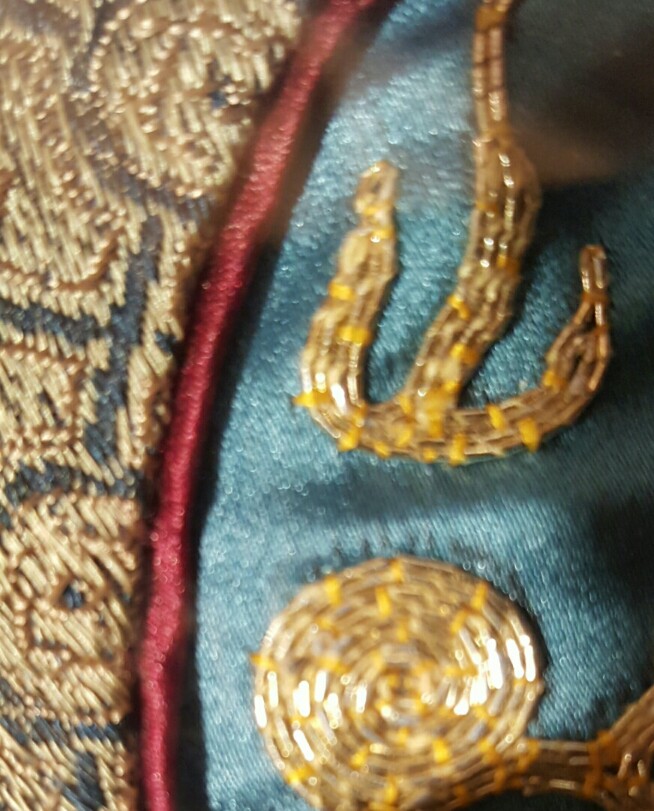
|
Subject:Re: Dating Chinese Textiles
Posted By: Bill H Sun, Dec 18, 2016
Your dragon roundel isn't traditional embroidery but a needlecraft technique called "couching", whereby threads, in this case sheathed by what looks in your photos a bit like gilt tubular beads, are sewn to a textile backing using needle and thread, which process also is called "tacking". Chinese roundels tend to have silk backings, though synthetics are not unknown, and also incorporate machine woven Jacquard-loom patterns in their borders, of which type your looks to be an example.
Roundels such as yours were mass-produced during the late 20th century and subsequently for utilitarian and decorative purposes, as opposed to the symbolic functions served by traditional rank badges and mystical icons for robes, which were made using traditional embroidery and various other techniques, such as the tapestry or "forbidden" stitch and a much more labor-intensive form of couching.
Against such a backdrop, while I would not discount the story of your roundel having once been used to decorate a robe, the same type of needlecraft items can still be found in China Arts & Crafts outlets, department stores and gift shops around Asia packaged for use as placemats on dinner tables, antimacassars for furniture and put in frames to brighten up the room. Such sets were favorites in American military exchange stores on US bases in Asia during and after the Korean and Vietnam War years.
Here are some Live Auctioneer results to give you an idea of values (your may have to sign up to see the hammer prices, but it is free).
https://www.liveauctioneers.com/item/42783962_circular-chinese-silk-embroidery
https://www.liveauctioneers.com/item/38285322_chinese-antique-embroidery-rank-patch
https://www.liveauctioneers.com/item/27343830_important-chinese-vintage-mans-half-length-robe
https://www.liveauctioneers.com/item/9452397_2-chinese-silk-embroideries
https://www.liveauctioneers.com/item/49399211_chinese-dragon-embroidered-medallion-1
Best regards,
Bill H.


|
 Dating Chinese Textiles
Dating Chinese Textiles  ( China & Japan ) - Christopher E - Dec 16, 2016 (09:46 PM)
( China & Japan ) - Christopher E - Dec 16, 2016 (09:46 PM)  Re: Dating Chinese Textiles - Robert - Dec 17, 2016 (09:27 AM)
Re: Dating Chinese Textiles - Robert - Dec 17, 2016 (09:27 AM)  Re: Dating Chinese Textiles - snap - Dec 17, 2016 (10:30 AM)
Re: Dating Chinese Textiles - snap - Dec 17, 2016 (10:30 AM)  Re: Dating Chinese Textiles - Bill H - Dec 18, 2016 (02:37 AM)
Re: Dating Chinese Textiles - Bill H - Dec 18, 2016 (02:37 AM) 

